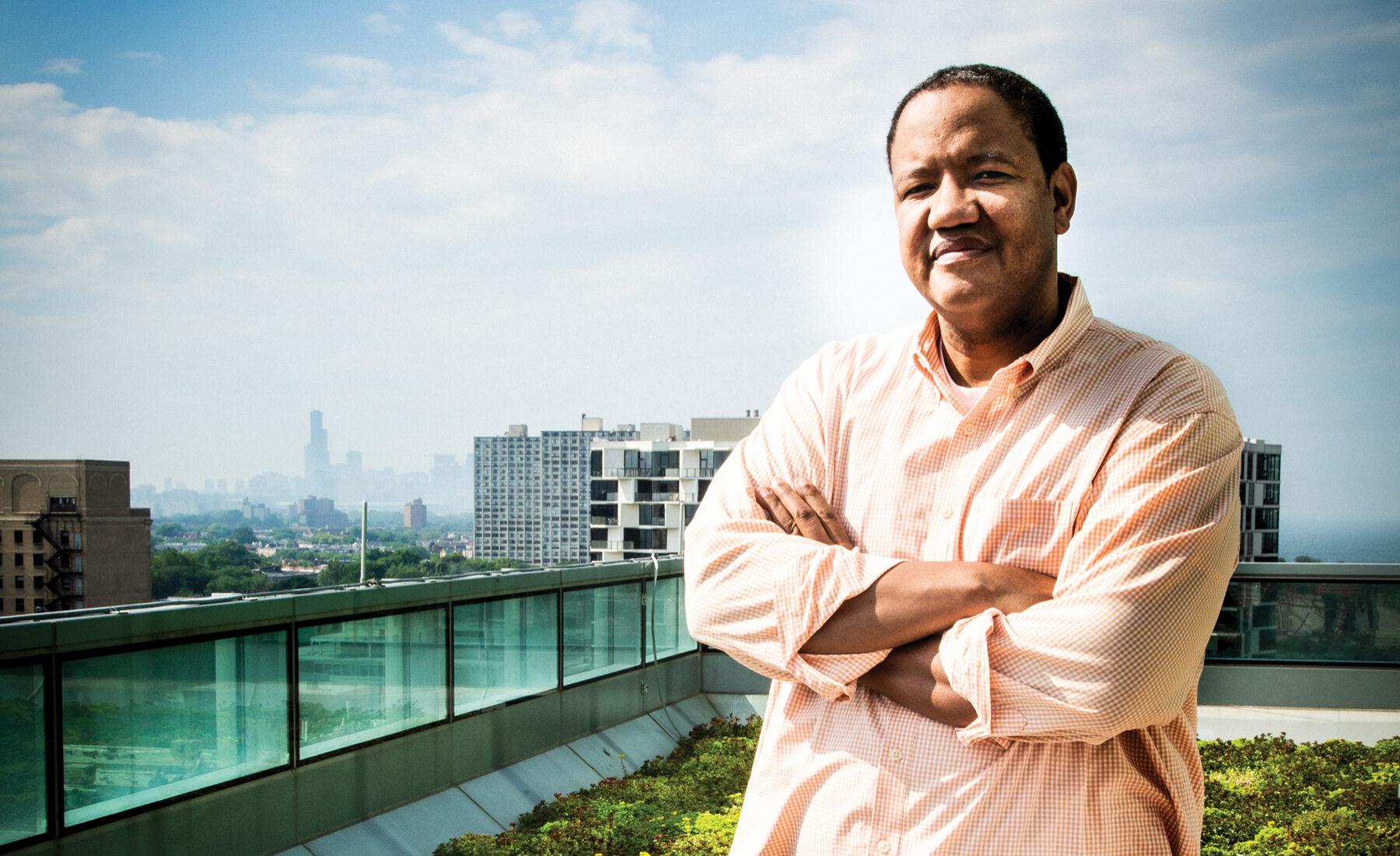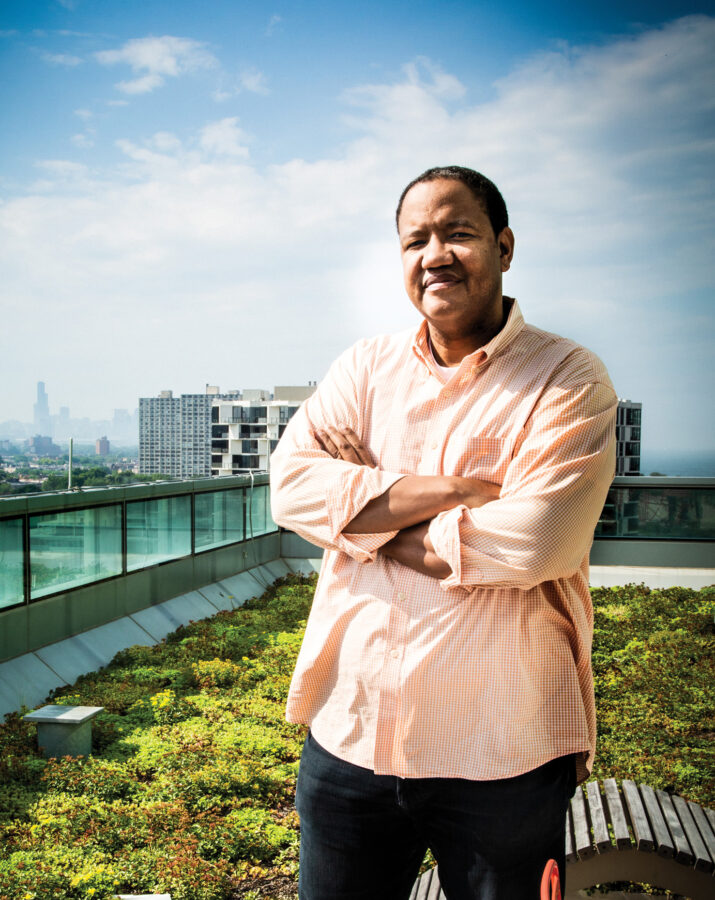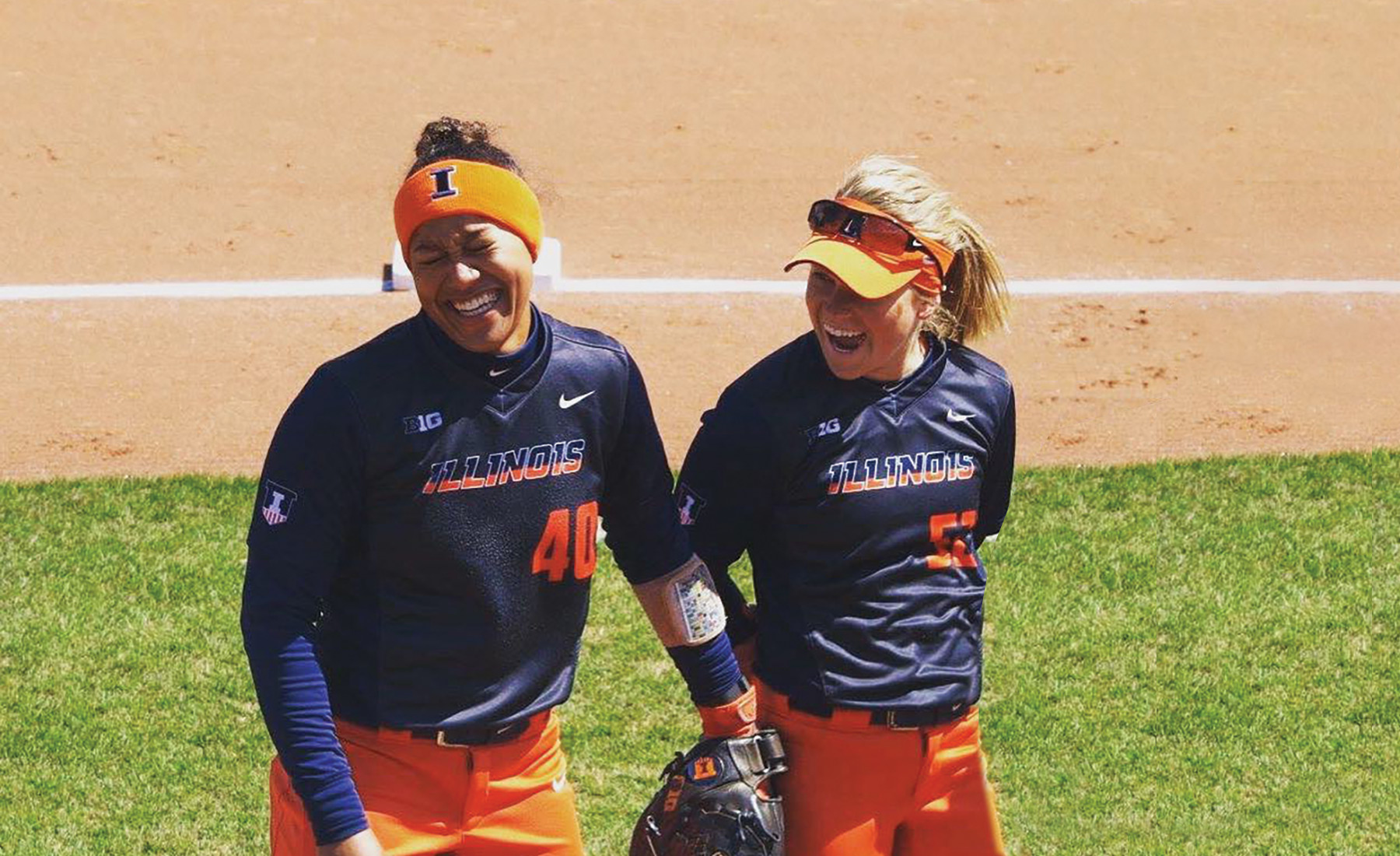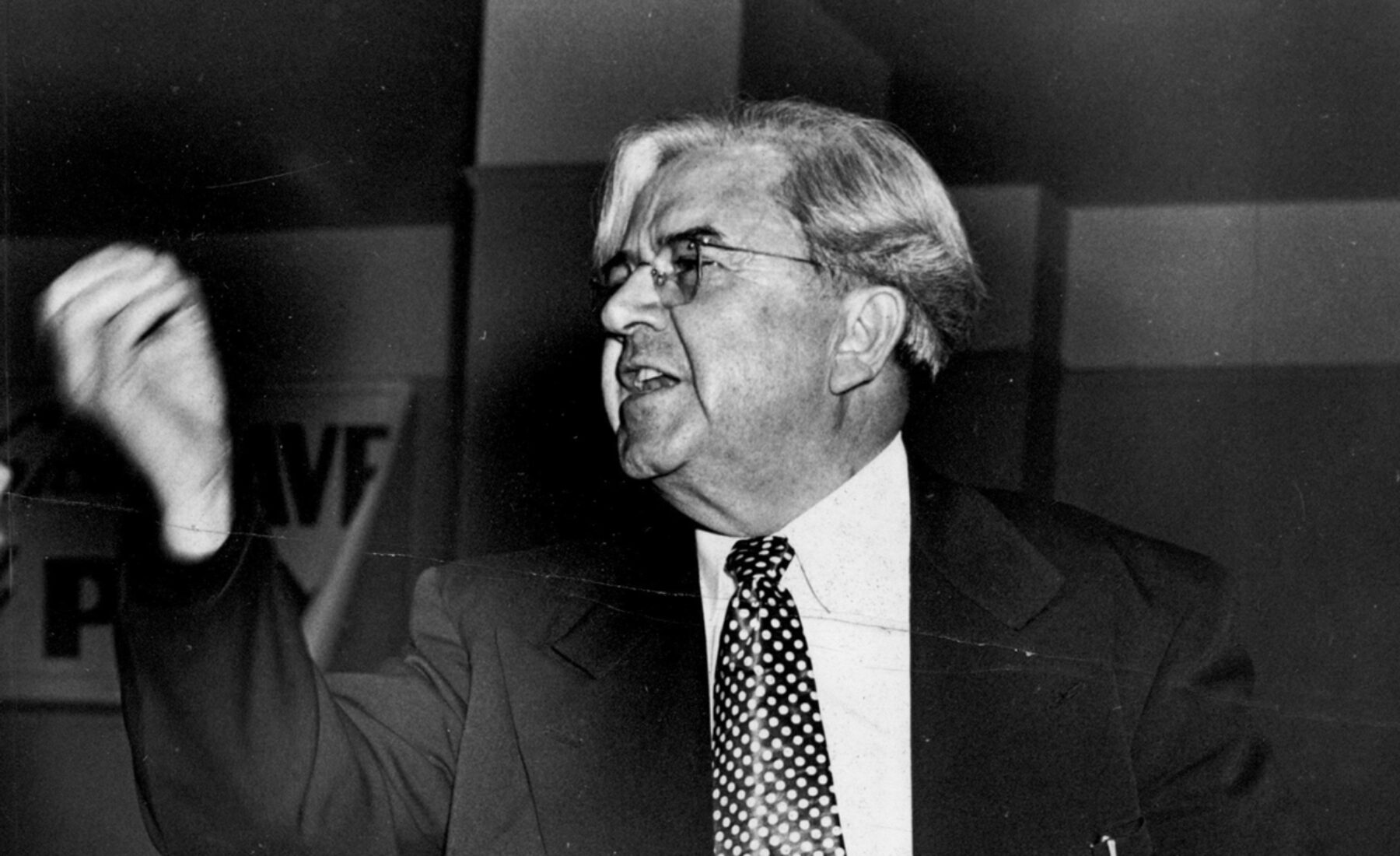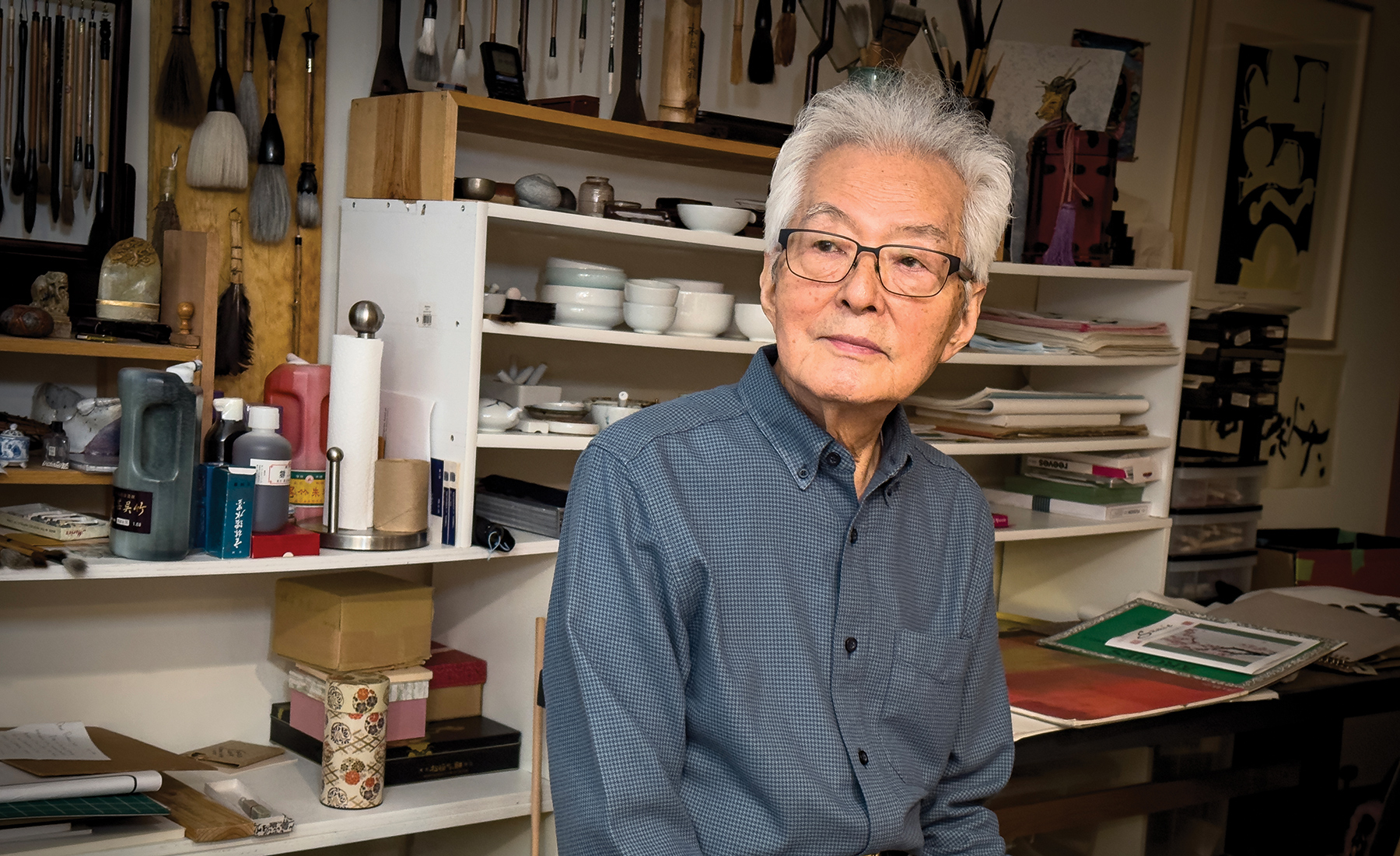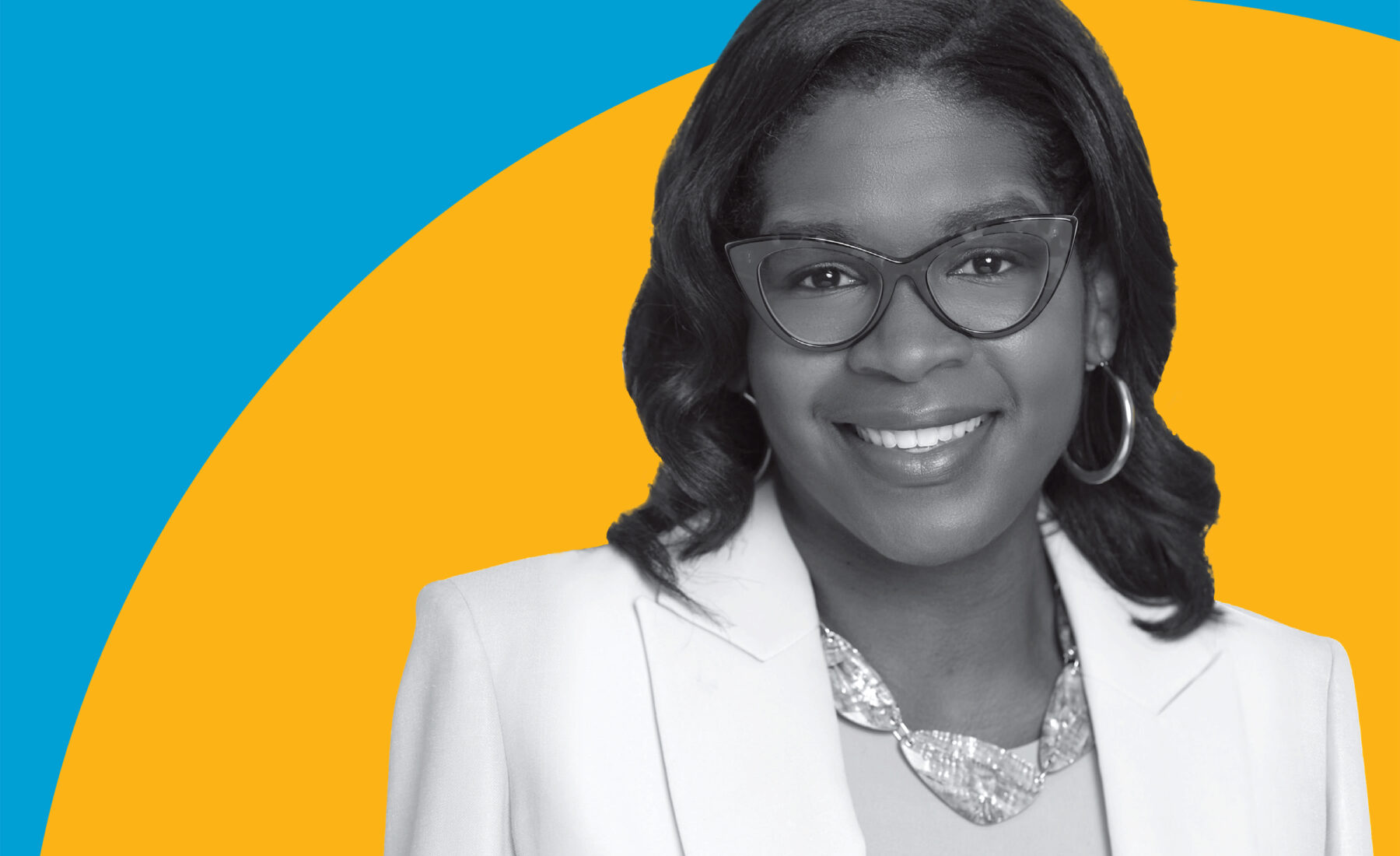In 1990, Michael Strautmanis (MEDIA ’91, LAW ’94) spent a hot Chicago summer weaving his bicycle in and out of downtown traffic, a messenger bag slung across his shoulder. In a couple of months, he would be a senior at Illinois with plans to go to law school after graduation. As he delivered packages in the Loop, he familiarized himself with the big law firms and began calling them looking for opportunities to gain experience.
His persistence paid off. Michael ended up working as a paralegal at the prestigious law firm Sidley Austin prior to entering law school at Illinois. It was there he met Michelle Robinson, an attorney who took Michael under her wing. Not long after, Michelle Robinson became Michelle Obama and Michael’s enduring friendship with the future President and First Lady began.
Michael’s interest in politics and community engagement mirrored that of the Obamas. He first served in the Clinton administration as chief of staff to the general counsel at the United States Agency for International Development. He joined the Obama White House in 2008 and served in a number of roles, including counselor for strategic engagement, deputy assistant to the president in the Office of Public Engagement and Intergovernmental Affairs, and chief of staff to Senior Advisor Valerie Jarrett.
Now, as chief of civic engagement for the Obama Foundation, Michael has returned to the city he loves, to do the work that he loves.
Michael greets me with an extended hand and a bright smile. He’s worn orange for the occasion, a nod to the university that he feels gave him so much. We are standing on the terrace of the Hyde Park offices of the Obama Foundation, on a day when the blue of Lake Michigan seems impossible, and the skyline is covered in a gauzy haze of low-lying clouds.
His warm and laid-back manner is coupled with a dogged optimism. It is clear that while the community organizers with whom he works are facing tough problems with deep roots, he has an unrelenting faith in their strength and ability to bring about change. These men and women inspire and motivate him, and he wants the Obama Presidential Center (OPC) to be a resource for them, one that will shore up their efforts and strengthen their networks.
As he talks about how the OPC will partner with the community, the energy that fills the room isn’t watered down, even though I know he’s talked about these plans countless times. Michael stands in front of the architectural model of the OPC campus, which nearly Takes over the entire conference table. He points out the tall, angled building that serves as a centerpiece for the park. It will house the presidential museum, as well as public gathering spaces. The campus will also include children’s parks and a branch of the Chicago Public Library, as well as a teaching garden, basketball courts, and restaurants. While entrance to the museum will require a fee, the rest of the 19.3-acre campus will be free and open to use for visitors as well as the surrounding community.
Michael has had an impressive career for a man not yet fifty years old. Many doors would open for him based on his experience—and the recommendation from a pretty powerful boss. Yet, Michael’s choice was to go back to his roots and stand with the men and women who shovel snow from the elderly’s front stoop, pack lunches for the hungry, and protect the vulnerable. He wants to support those working to improve their communities and hopes to inspire the next generation of civic leaders.
This is where he wants to be.
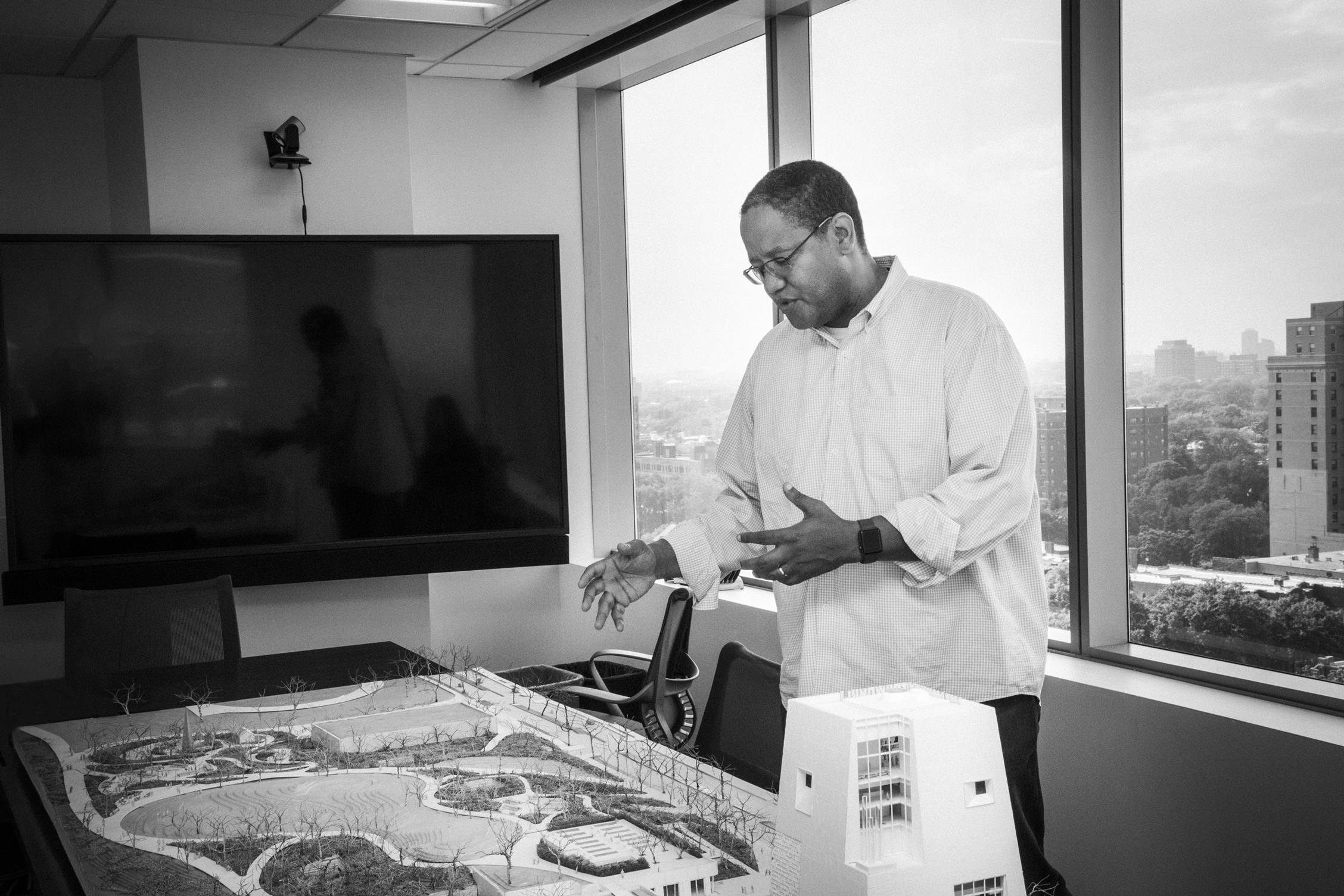
✦ ✦ ✦
What words would you use to describe Chicago?
Proud. We are a city that has a lot of pride, and it’s that pride that continually calls people to do better. One of the reasons why people focus on our problems is that people aren’t satisfied with the status quo. They demand better of their elected officials. They demand better of their leaders. They demand more of themselves and one another. There is just not a lot of complacency here. We demand better, and we can do better.
Chicago is also complicated. I had a chance to see President Obama use everything that he learned and experienced across the state, but particularly in Chicago, and apply those skills in bigger and bigger settings. I think New York has stolen the line, but I believe if you can get along in Chicago, those skills really do translate elsewhere.
Tell me about your Chicago.
I was born on the South Side of Chicago in Chatham, raised in my grandfather’s home. He was a packer in the stockyards and worked his way up to being a custodian in the Chicago Public Schools. My mom remarried when I was very young, and I moved in with my stepfather’s Latvian family. We moved to Uptown on the North Side, which is where I then grew up.
Part of my Chicago story is growing up in these communities who are seen as having (and do have) stark differences. I’ve had the opportunity to not only see what was different in these communities but—more than anything else—see what people had in common. My family’s story is an immigrant story. Some in my family moved to Chicago as part of the Great Migration, some from Eastern Europe. I have family members who show me a tremendous amount of love and affection who are of different races and different backgrounds. People who work hard every day and try to do their best. People who care about their neighborhood, who love their family and their city.
So much of my story was about living in between these different neighborhoods. Often that put me in a position of translating and understanding because I wasn’t willing to separate myself from either of them. I had to hold these different communities together in my own story as I grew up.
What is the power you find in that space in between? In the space where we focus on what we have in common?
When I was at the University of Illinois, I went in as a theatre major. I know that in order to be a good actor you have to be a good listener. The work I do today is really all about listening to understand and listening for commonality.
Those points of commonality are points where you can make progress. If you can sit down with multiple people and say, “Hey, I know you live in Englewood and are a small business owner, and you are Latina and trying to start a nonprofit to help single moms, and you’re in Uptown and a housing activist. I hear you all saying you want to make change happen. Let’s come together, and together we can make this happen.” My experience working with the Obamas puts me in a position where I can empower people to do things with each other, which I think is more than they could have done individually. And that is the whole point of community organizing.
It sounds like what you’re talking about are the underpinnings of the Obama Presidential Center’s mission.
I’m so excited about this center because what the president wants to do really is consistent with my values and what I believe about opportunity. In being on this journey with him and with Mrs. Obama, I’ve seen it work. This is not just faith, this is experience. I’ve seen people who were not involved in politics get involved in politics and change the future of this country. I’ve seen people who disagreed with each other come together and find common ground, and I’ve seen—you know this is going to sound corny— but I’ve seen a kid from Hawaii who moved to Chicago without knowing anybody, rise to be able to help millions of people live a better life. I’ve seen it happen and to be able to create an institution about that right here in my hometown on the south side of Chicago is pretty cool.
What are you seeing in people who are organizing across Chicago?
There are a lot of people in Chicago who get up every day trying to improve their communities and create opportunity for their neighbors. These are some of the most intelligent, passionate, committed, and driven people that I’ve ever met. The first thing we want to do right off the bat is to shine a spotlight on them. We can use our presence online to spotlight people like Jahmal Cole who has an organization called My Block My Hood My City. For example, during the winter he brought hundreds of Chicagoans from across the city to a neighborhood on the South Side to help shovel snow in front of the homes of seniors. That’s not something you hear a lot about, but we can give them a platform.
Tell me a little bit more about how the Obama Foundation will help community organizing in the city.
There are ways to organize that have shown to be more effective than others. We have the opportunity to give folks who are either doing this community-based work or who want to do this community-based work some tools to be most effective. Organizing is often very lonely, very hard work. I’ve met people who are literally working blocks away from each other—but don’t know each other. We want to create that network where we can learn from one another.
Young people, in particular, love President and Mrs. Obama. The Obamas can serve as an example for young people who want to make the world a better place but might feel like either they don’t know what to do or that it might be a waste of time. We want to get them in the game.
President Obama has said, “Don’t believe in my ability to make change, believe in yours.” So that’s what this work is about.
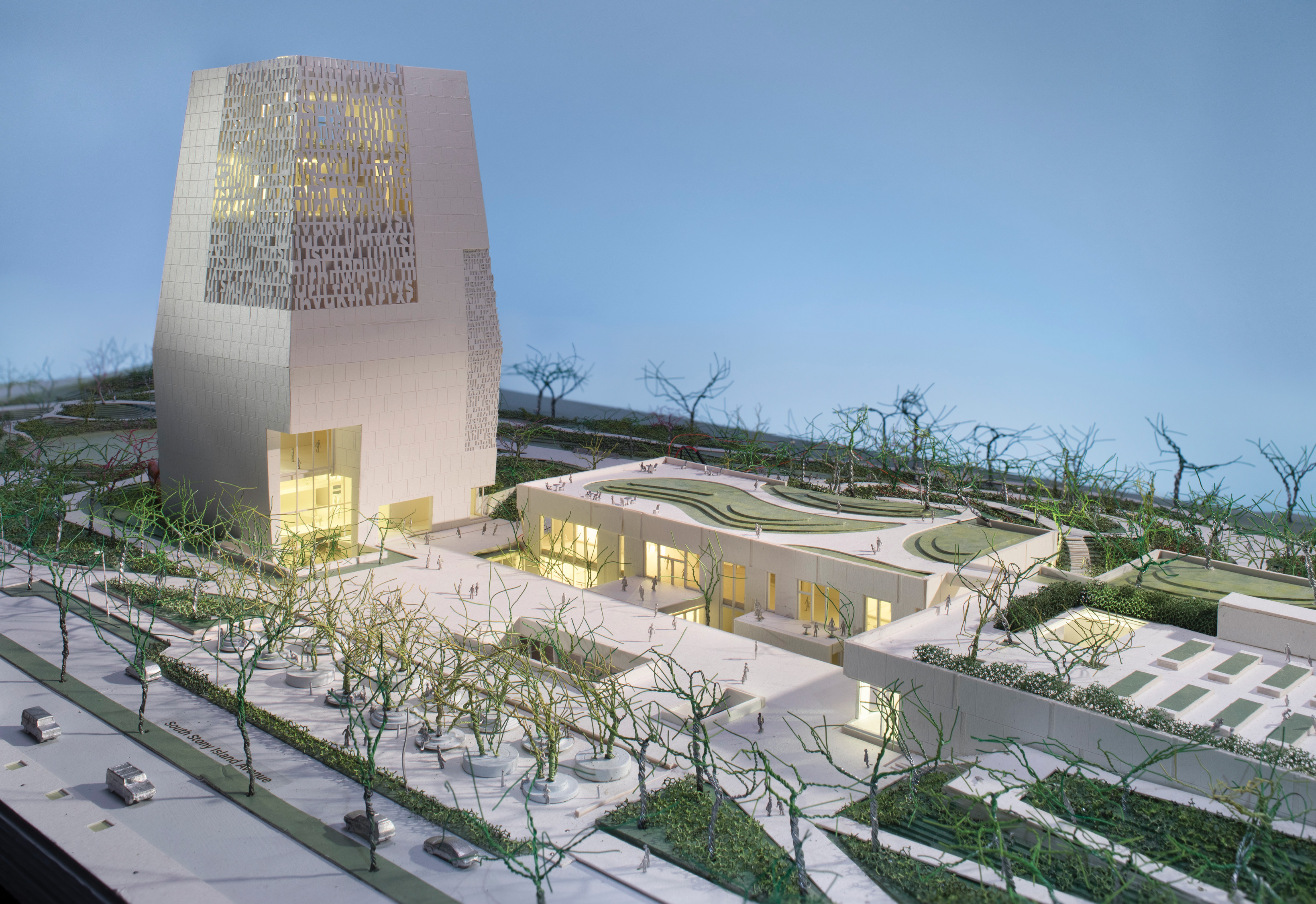
Did you think that you would end up here?
I am so far away from where I thought I would wind up. I never thought I would move out of Chicago, much less know someone who was President of the United States, much less get a chance to serve my country. To be able to bring all that back here to make a difference is a staggering opportunity. It just shows me that this is a great country and a great city that a kid like me can have a chance to do this. There are people—particularly my mom—who invested in me and made sure that I had a chance to go to all of the museums, libraries, and public institutions that were there for me to be able to learn from. To come back and be a part of creating a cultural institution for future generations is a privilege, and I’m very passionate about getting it done.
What do you hope to see in five years?
I hope to be working every day at the Obama Center and seeing all kinds of visitors from around the world, neighbors from across the street, people from around the city, just being active and enjoying it. Playing, working, and learning. I also want to really be a part of bringing the world to Chicago and bringing Chicago to the world. There is a lot that we can learn from one another.
I think that there are people in this city who have extraordinary things to teach others about how to deal with very complicated issues that are taking place in cities around the world: how to educate a growing set of young citizens, how to deal with issues around violence, how to deal with differences in a way that’s successful and generative. We have a deep history of civic engagement in Chicago, from Jane Addams to Harold Washington to Barack Obama.
I want the kids who happen to take the bus down by Stony Island or visit the Center or drive down Hayes Drive to know that the person who built this, whose achievements allowed this to happen, walked the same streets as they do, had the same dreams and some of the same obstacles that they do. I want them to be inspired by it.
And I want the people in the neighborhood and the community in the city to know that they were a part of creating it. That this didn’t just happen. They were able to participate and that’s really my job, to facilitate that participation.
It’s going to be a busy five years.
This story appears in our latest print edition of STORIED.
This story was published .